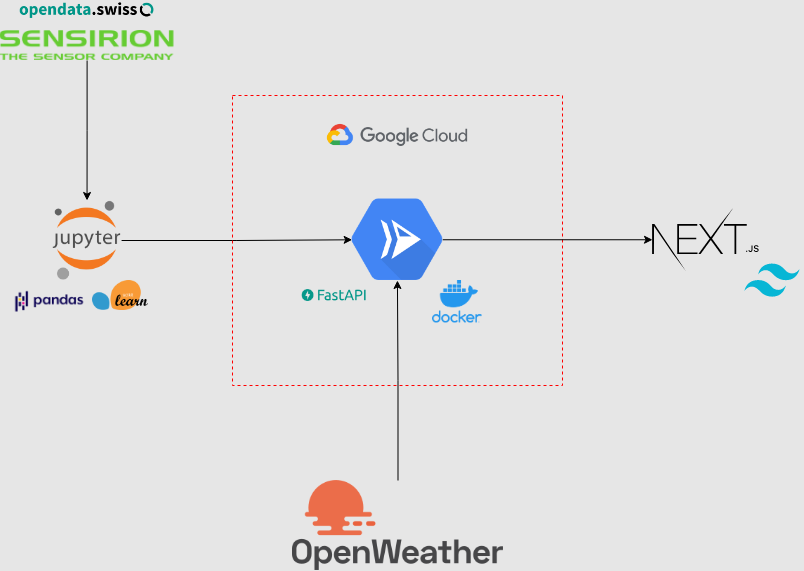Live demo: https://remoteforecaster-hz2022.vercel.app/
In a world beyond the verge of the change, where more and more people are starting working from all around, we need to be aware of the impact of such a choice. Not only on our social sphere, but also on the environment and our own health. Why do we need to know that? Because only through conscious decisions one can shape their behaviour and change their lives, their society and, ultimately, the environment. For the better.
Remote Forecaster helps you to understand the impact of going to the office or not, depending on your habits, meteorological situation and office air quality conditions. Improve your decisions, by being aware of what they are producing.
The model is giving you a percentage of how likely you should go to the office depending on the social interaction possibility. Percentage is computed from the backend from the model's prediction: the level of CO2 inside the office, based on the outside weather situation and the inside air quality conditions. The features taken into account come from the following data sources:
- We wanted to use all the datasets available to us, but because of limitation of time, we had to narrow the scope to identify what we want to achieve and how we can optimally do it
- We used the power of Machine learning to make valuable predictions from air quality, climate and energy datasets to conserve resources.
- We realised that only one dataset on its own is not enough to enable us to make valuable predictions. We had to combine multiple open datasets, as well as gather real time weather results in order to achieve meaningful predictions.
- We gather data from Sensirion, opendata.swiss and OpenWeatherApi to feed our Machine Learning algorithm, and identify how to make an optimised decision in a constrained environment.
- We hosted the machine learning model in Google cloud using dockerized FastAPI service, which was used to take data from different sources, preprocess it, and infer the prediction for user regarding feasibility for working from home or going to the office, along with sharing the energy impact of his choices on the environment.
- We dockerized the application so that it could be deployed easily and deterministically using any cloud service or provider.
- As an app aimed at giving to the user quick and efficient information, we wanted to work on a technology optimized for Mobile. React with Next.js provided a fast and easy way to showcase our app's main feature. In combination with Tailwind CSS, we were able to render easily a visually appealing webapp.
- There were significant challenges associated with the course of path that we took. We made sure to take valid and reasonable assumptions along the way to understand how we can make the most with the provided data.
- The dataset from Sinsirion was lacking contextual information that would be necessary to teach a ML model to generalize. To cater for that, we had to stitch few datasets together to get some meaningful dataset to start from.
- Retrieving, cleaning, aggregating and stitching different datasets together is quite a hard task. It is important to understand the sampling rate between different datasets as well as same units of measurement were used.
- Understanding the target value to learn from an open data for a specific task was again a rigorous task. We had to verify that enough data exists in dataset so that training can be effective.
- A significant amount of curated dataset is important to train a ML model for a given task. That can be a very hard task if there is not enough data, or not enough valid data.
- Air quality data must have a valid hypothesis behind its collection. It is easier to collect data from anywhere but what does it represent and what would be the impact analysis of that is important to know.
- We would want to collect more data in terms of household energy data, workplace energy data, household air quality data, workplace air quality data, public transport figures (how much used, how much energy spent, how much invested) to make even more solid predictions regarding safe and optimised commute options for everyone.



.jpg)
.jpg)
.jpg)